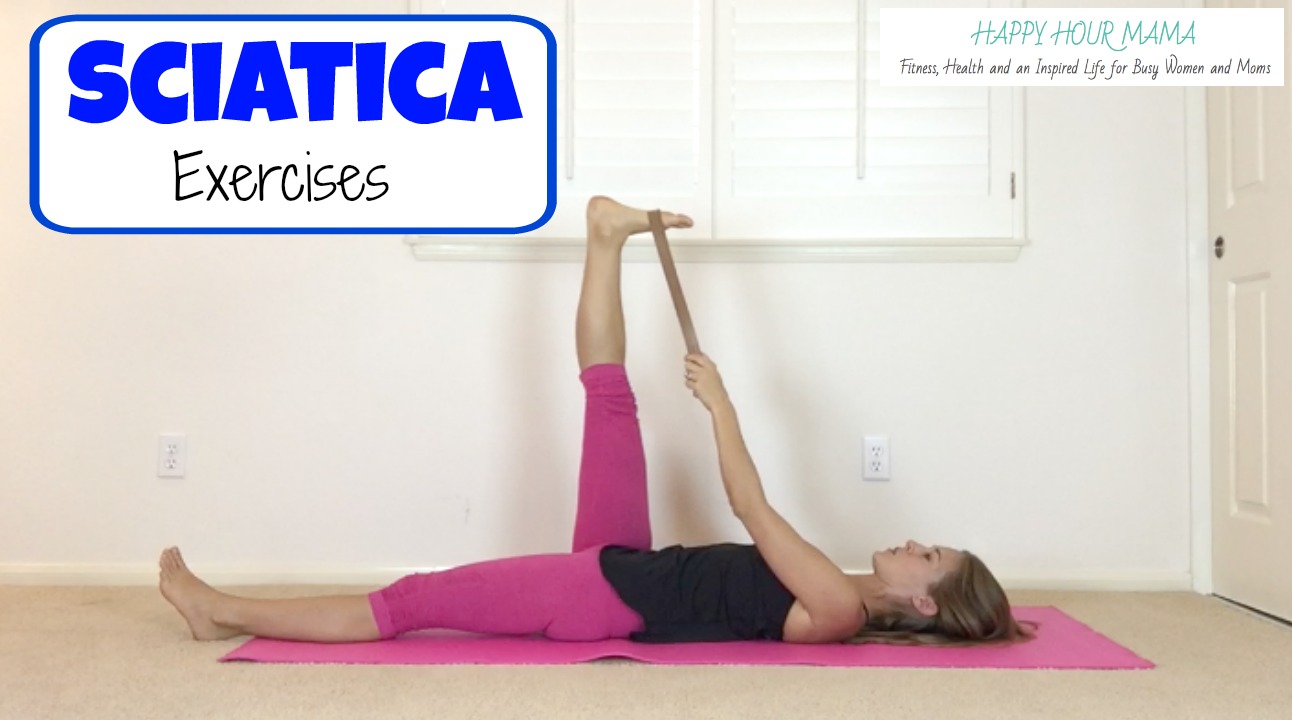I recently received this email from a reader:
“I have been doing your video for low back pain and it has really been helping! I would appreciate any tips you might have for sciatica as well. Thanks!”
I thought it was such a great idea that I filmed a video the next day! I hope it can help some of you suffering from sciatica and sciatic nerve pain and that it shows you there is a light at the end of the tunnel.
Let’s jump right in.
Sciatica is defined as pain caused by the sciatic nerve.
Clear as mud, right? Let’s see if we can clarify that a little.
The sciatic nerve is the largest nerve in your body. Every major nerve in your body branches off from the spinal cord and exits the vertebrae through small holes called the foramen. Then there are additional smaller nerve roots that branch off from those in order to innervate the entire body. You have mirror images of your nerves on both sides of your body, meaning you have a right and left sciatic nerve.
Just like muscles, nerves can cause pain. The mechanism is very different, though.
Nerves can become pinched, crushed or injured in a variety of ways. Hit your funny bone? That is a short term trauma to your ulnar nerve. Carpal tunnel? That is a compression of your median nerve.
Sciatica? Well, that’s an issue with your sciatic nerve (had to state the obvious there).
Sciatic nerve pain is usually caused by some kind of compression – or “pinching” – of the sciatic nerve. The two main places the sciatic nerve can be compressed is at the hole where it leaves the spinal cord or at a tight piriformis muscle in your buttocks.
(No, being a tight ass can not directly cause sciatica, but a tight piriformis can.)
There are many different reasons these things can happen. You can have a narrowing of the foramen due to arthritis and bone spurs. That narrowing can also be caused by inflammation from an injury or possibly a herniated disc.
Sciatic nerve pain oftentimes can be caused simply by a change in muscle function or posture that causes the nerve to become compressed. This is commonly seen in pregnancy. As the body adjusts to a growing belly, the back goes into increased arch and extension. This can put pressure on the vertebrae and cause a pinching of the sciatic nerve.
No matter the cause, the symptoms you feel and the treatment we give will be very similar!
Sciatica symptoms can vary, and here are some of the most common:
Pain in the buttocks, back of the leg, calf and/or heel
Pain in the buttocks with sitting too long
Pain is usually one sided, but can be felt on both sides IF both sciatic nerves are affected
Pain described as shooting, burning or lancinating
Numbness/tingling in the buttocks or back of the leg
With all that being said, the key to this post is to let you know that sciatic nerve pain can be treated!
Our goal with nerve pain is to relieve the compression on the nerve. In physical therapy, I use a variety of exercises, postural training and massage to calm down the nerve irritation and eliminate the cause of the nerve compression.
If you are experiencing sciatic nerve pain, I would definitely recommend seeing a physical therapist! There are many evaluation techniques they can use to help determine the cause and relieve your pain.
This exercise video I’ve put together can help supplement your treatment and give you an option to do at home. This can be effective for anyone who wants to either help current sciatic nerve pain or prevent sciatic nerve problems in the future.
In this routine, we work a lot on opening space in the back to relieve pressure on the nerve. Nerve pain radiates, which means that it may be pinched in your back but you will feel it all the way down to your foot. Treating just the foot won’t help. We have to treat the cause. So if you are feeling sciatic pain anywhere in your leg, these exercises can still help.
Please note that exercise should never aggravate your nerve pain! While muscle soreness is sometimes ok in treatment, nerve “soreness” isn’t. If you are feeling your sciatic pain during this, please stop right away. It just means you are aggravating the nerve more. Back off slightly and see if you can find a gentle movement in the exercise that does not cause pain. Always talk to a doctor before starting a new exercise program.
I truly hope this helped shed some light on a problem I know many of you have faced, are currently facing or will face in your lifetime. Don’t let sciatic nerve pain discourage you! There are things you can do to help get past the pain and move on with your life.




